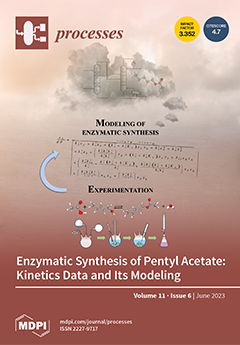In this study, three paddy harvesting systems, manual harvesting of paddy (MHP), reaper harvesting of paddy (RHP), and combine harvesting of paddy (CHP), were evaluated considering field capacities, field efficiencies, time and fuel consumption, mechanization indices, greenhouse gas emissions, straw availability, and direct
[...] Read more.
In this study, three paddy harvesting systems, manual harvesting of paddy (MHP), reaper harvesting of paddy (RHP), and combine harvesting of paddy (CHP), were evaluated considering field capacities, field efficiencies, time and fuel consumption, mechanization indices, greenhouse gas emissions, straw availability, and direct and indirect costs. Field experiments were conducted in the North Central Province of Sri Lanka. The effective field capacity, field efficiency and fuel consumption of the combine harvester were 0.34 hah
−1, 60.8%, and 34.1 Lha
−1, respectively, and those of the paddy reaper were 0.185 hah
−1, 58.2%, and 3.8 Lha
−1, respectively. The total time consumed by MHP, RHP, and CHP were 76.05 hha
−1, 39.76 hha
−1, and 2.94 hha
−1, respectively. The highest energy utilization was recorded by the CHP, at 1851.09 MJha
−1, while MHP recorded the lowest at 643.20 MJha
−1. The direct cost of the MHP was 1.50 and 1.52 times higher than those of the CHP and RHP, respectively. MHP recorded the lowest greenhouse gas emissions (32.94 kgCO
2eqha
−1), while CHP recorded the highest (176.29 kgCO
2eqha
−1). The RHP exhibited an intermediate level in all aspects. Although the CHP has higher field performance and direct costs, it has higher GHG emissions and indirect costs. Therefore, an optimum level of mechanization should be introduced for the long-term sustainability of both the environment and farming.
Full article





